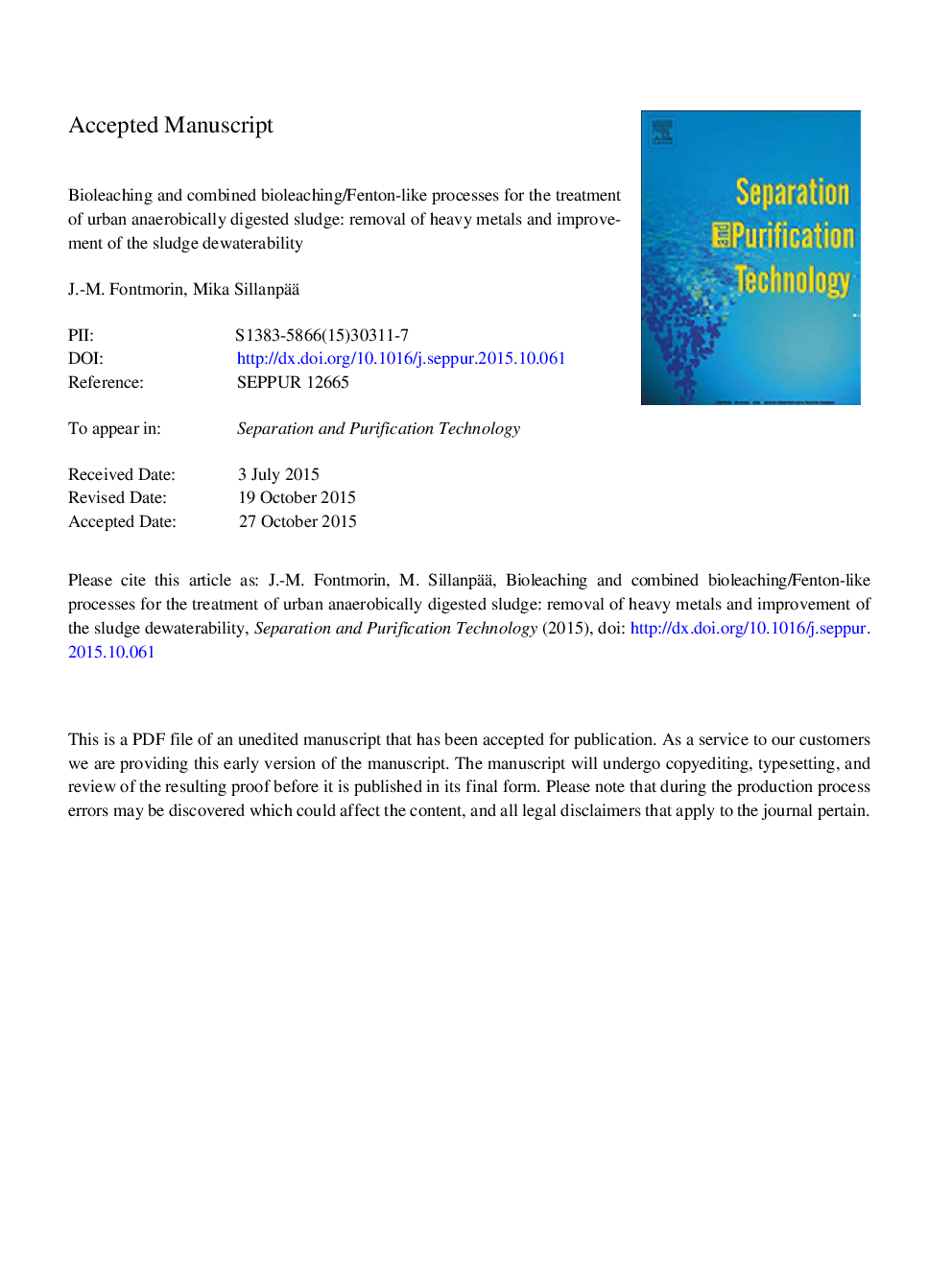| Article ID | Journal | Published Year | Pages | File Type |
|---|---|---|---|---|
| 10389729 | Separation and Purification Technology | 2015 | 39 Pages |
Abstract
The objective of this study was to compare the performances of bioleaching and combined bioleaching/Fenton-like processes for the treatment of urban anaerobically digested sludge. The removal of heavy metals in very low concentrations as well as the improvement of the sludge dewaterability were investigated. The bioleaching treatment based on indigenous microorganisms activity was performed during 18 days and it led to a removal of Cd, Cr, Cu, Pb, and Zn of 81.5% ± 2.5%, 9.9% ± 1.7%, 93.7% ± 7.2%, 33.6% ± 1.0%, and 93.8% ± 3.6%, respectively. It was also shown that the bioleaching process had a significant impact on the sludge dewaterability, since the sludge volume index (SVI) decreased by 55.3%, and the specific cake resistance (SCR) and capillary suction time (CST) were reduced by 94.8% and 97.3%, respectively. Bioleaching was then used as a pre-treatment step and involved in the combined bioleaching/Fenton-like process. Bioleaching used as a pre-treatment was shortened to 6 days, and the Fenton-like reaction was then investigated with the addition of 36 mM, 180 mM and 360 mM H2O2. The removal of Cd, Cr, Cu, Pb and Zn reached respectively 34.8% ± 0.1%, 14.5% ± 0.1%, 86.3% ± 0.6%, 30.9% ± 1.0% and 97.9% ± 2.4%. The combined bioleaching/Fenton-like process led to a very high improvement of the sludge dewaterability. Indeed, the SVI of the raw sludge was reduced by 62.0%, and SCR and CST decreased by 99.5% and 98.4% respectively. The combination of bioleaching with Fenton-like reaction thus gave promising results for the treatment of sludge in terms of heavy metals removal and improvement of its dewaterability.
Keywords
Related Topics
Physical Sciences and Engineering
Chemical Engineering
Filtration and Separation
Authors
J.-M. Fontmorin, Mika Sillanpää,
